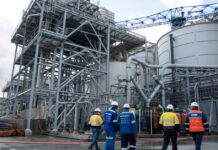CONSIDERING the intense focus that automation is receiving from various truck original equipment manufacturers (OEMs), driverless trucks will become a reality in the foreseeable mid-term future. Till then, more developments will take place in the different automations levels to support drivers.
Rory Schultz, Sales Director of UD Trucks Southern Africa, notes that the South African transport logistics industry is also ready for this technology as it is facing similar challenges as those of its counterparts in other countries of the world. “The global transport logistics industry, including local third-party logistics providers, is under significant pressure. Transporters need to improve productivity, efficiency and safety. Automation of trucks provides the solution by removing the limitations of human performance from the transport of goods via roads to exceed existing benchmarks for excellence in productivity, efficiency and safety that have been established by among the best transporters in the industry,” Schultz says.
He reminds that the OEM has already laid a solid foundation upon which to continue innovating to the point where the risk of human error is completely removed from the haulage of goods. This is especially the case in demanding line-haul operations.
There are five levels of truck automation, three of which UD Trucks has partly completed and South African transporters are, therefore, already using this technology with great success.
The first and second levels entail enabling the truck to perform all those functions that a driver would use their hands and feet to do. UD Trucks’ Easy Safe Controlled Transmission (ESCOT) has eliminated the need for the left foot on the pedal and the left hand on the gear. The driver is, therefore, able to keep both hands on the steering wheel while driving the truck for improved safety.
Its ESCOT technology has evolved significantly since its introduction in 1995. The latest version, ESCOT-VI, is easier to operate. Its Foretrack technology uses global-positioning system to predict the road ahead. It also performs optimum gear changes, selecting automatically among the 12 ratios available. This is according to driving conditions, such as road gradient, corners and payload. In this way, the technology reduces fatigue and stress. Using the technology, even an inexperienced driver is able to achieve smooth progression with excellent fuel economy. Furthermore, ECO mode is now set by default to ensure constant fuel savings. Another innovation is the Escape function, which optimises the engaging and disengaging of the clutch to better navigate difficult conditions, such as ditches, by swinging the truck back and forth.
The third level of automation involves doing away with the need for drivers to constantly keep their eyes on the road. This level is followed by replacing drivers’ attentive abilities with technology.
The Traffic Eye Brake system alerts drivers to potential dangers on the road, improving their response times to avoid possible collisions. It uses dual monitoring with millimetre-wave radar and camera to dramatically improve detection of the vehicle ahead. A warning indicator and an alarm alert the driver of a potential collision with a vehicle ahead. If the vehicle reaches a distance where a collision is possible, brakes are applied quickly to eliminate or mitigate damage.
The fifth and final level of truck automation entails completely removing the driver from trucks by harnessing artificial intelligence.
Certainly, South Africa’s readiness for state-of-the-art truck technology is demonstrated by the significant uptake of the Quon Euro 5 by local transport logistics companies. It is currently the largest selling Euro 5 truck in South Africa. Based on this performance, UD Trucks Southern Africa will be expanding its Euro 5 offering in the country to include the Quester and Croner. The launch of these products will take place in 2022.
This truck technology points the way forward, featuring innovation such as Lane Departure Warning System, Adaptive Cruise Control and UD stability control.
It is evident that the South African road transport logistics sector has reached a new level of sophistication over the years and is comparable to among the best third-party logistics providers in developed countries of the world.















